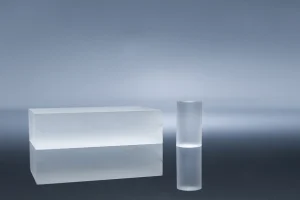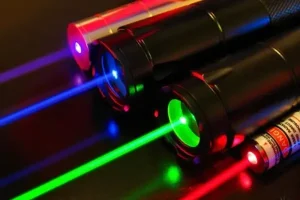Introduction
In the fast-paced world of modern technology, lasers have emerged as a vital tool in various applications, from medical treatments to industrial manufacturing. But as with any technology, not all lasers are created equal. Two of the most discussed types in the laser world are the continuous lasers and the quasi-continuous lasers. In this comprehensive guide, we delve into the intricate working principles of both and explore their respective applications across different domains.
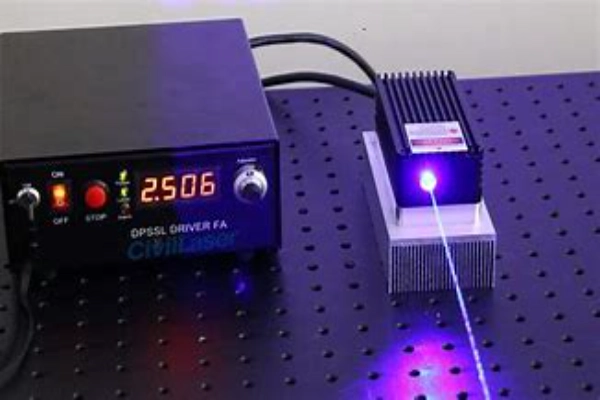
The Core Principles of Continuous Laser
The science and technology behind lasers have seen significant advancements over the years, and the core principles underlying these developments are fascinating. Among the various types of lasers, continuous lasers have carved a distinct niche for themselves. Their consistent and stable beam of light has made them a favorite in many applications.
At the heart of continuous lasers lies the working mechanism that allows them to emit a constant, uninterrupted light beam. Imagine a river flowing without any obstructions—this is how a continuous laser works, providing a non-stop stream of light. This continuous emission is achieved through a balanced process where the rate of stimulated emission is equal to the rate of absorption, ensuring that the output remains steady. The stability of this output power is what makes continuous lasers the go-to choice for tasks that require a consistent light source, free from fluctuations.
But how is this steady stream of light achieved? The answer lies in the choice of crystals used in the lasing medium. The Neodymium-doped Yttrium Aluminum Garnet, commonly known as Nd:YAG, is a prime example. This crystal, with its exceptional thermal conductivity, stands out for its ability to produce high-power outputs. It has become an integral part of many medical lasers due to its precision and strength, allowing surgeons to perform intricate procedures without causing damage to surrounding tissues. Furthermore, its capabilities extend to industrial applications, where it plays a crucial role in tasks like metal cutting and welding.
Another commendable crystal in the world of continuous lasers is Nd:YVO4, or Neodymium-doped Yttrium Orthovanadate. This crystal boasts a high absorption coefficient, ensuring maximum absorption of pump light, which is a crucial factor for efficient lasing. In addition, its good thermal stability makes it resilient against potential damage caused by heat, a common concern in laser operations. Consequently, it finds its place in a variety of applications where reliability and efficiency are paramount.
While continuous lasers have numerous advantages, they are not without their drawbacks. Their primary strength, providing a stable output, also means they offer limited flexibility when it comes to pulse control. In applications where varying the pulse is essential, continuous lasers might not be the best choice. Moreover, these lasers, especially when operating at high powers, can generate excessive heat. This not only poses a risk to the equipment but can also be a safety concern in certain scenarios.
In conclusion, continuous lasers, with their unique working mechanism and choice of crystals, have revolutionized many fields. Their ability to provide a stable and consistent beam of light has been instrumental in their success. However, like any technology, they come with their set of advantages and disadvantages, making it crucial to choose the right type of laser for specific applications.
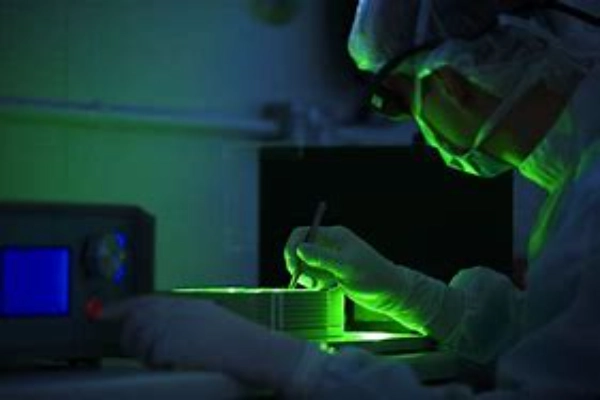
Delving into Quasi-Continuous Lasers
Quasi-continuous lasers occupy a unique space in the realm of laser technology. While they might seem similar to continuous lasers at a glance, their operation distinctly sets them apart. These lasers emit light in rapid pulses, so fast that to the human eye, and even many instruments, it appears as if the beam is continuous. This is achieved due to their exceptionally high repetition rate, where the time between individual pulses is minimal, ensuring an almost seamless flow of light.
The choice of crystals in quasi-continuous lasers plays a pivotal role in their operation. A standout in this category is the Titanium-doped Sapphire, or Ti:Sapphire. This crystal is not just chosen at random; its wide tuning range makes it exceptionally adaptable. This adaptability means that the laser’s wavelength can be adjusted to suit specific requirements, a feature that is invaluable in precision tasks. Furthermore, the short pulse durations of Ti:Sapphire ensure that the laser can be fine-tuned to deliver quick bursts of energy, ideal for tasks that require pinpoint accuracy without prolonged exposure.
The strengths of quasi-continuous lasers are evident in various applications. Their ability to offer enhanced control over pulse durations makes them versatile. Whether it’s a task that requires a long, sustained pulse or a quick burst of energy, these lasers can be adjusted accordingly. Moreover, one of the significant challenges with lasers, in general, is heat generation. Quasi-continuous lasers, due to their pulsed nature, typically produce less heat compared to their continuous counterparts, ensuring better longevity of the equipment and enhanced safety.
However, with these advantages come certain limitations. The very feature that provides them with flexibility, the ability to control pulse durations, also means they might require more advanced control mechanisms. This can make their setup and operation slightly more complex, especially in scenarios where precise control is paramount. Additionally, in terms of energy efficiency, they lag behind continuous lasers. The intermittent pulsing means there’s a start-stop nature to their operation, which can result in higher energy consumption over prolonged usage.
In essence, quasi-continuous lasers, with their distinct operational mechanism and choice of crystals, offer a blend of versatility and precision. While they have clear advantages in specific applications, understanding their limitations is crucial to harness their capabilities fully.

3. Applications in Different Domains
The world of lasers, both continuous and quasi-continuous, has found applications in a myriad of domains, each benefiting from the unique attributes these lasers offer.
Diving into the realm of continuous lasers, their importance in the medical field cannot be overstated. Surgeons and therapists alike have come to rely on their steady beam for a plethora of procedures. Picture a delicate eye surgery where precision is of utmost importance. The stable output of continuous lasers ensures that the beam doesn’t falter, allowing surgeons to make exact incisions, minimizing risks and improving patient outcomes. Beyond surgeries, therapeutic treatments also benefit. For instance, in skin treatments, the even distribution of laser energy ensures effective results with minimal side effects.
Moving over to the industrial manufacturing sector, the magic of continuous lasers is evident everywhere. Whether it’s the fine detailing on a piece of jewelry or the seamless welding of airplane parts, the consistency of these lasers is paramount. Their ability to maintain a consistent beam means materials are treated evenly, ensuring quality and durability. In engraving tasks, the continuous nature of the laser ensures that designs are etched smoothly without any breaks, giving the final product a polished look.
Switching gears to quasi-continuous lasers, their role in research and development is transformative. Laboratories across the world, working on cutting-edge projects, often require equipment that offers both precision and adaptability. Quasi-continuous lasers, with their ability to be finely tuned, fit the bill perfectly. Spectroscopy, a technique used to determine the composition of substances, benefits immensely from these lasers. Their pulsed nature allows scientists to obtain detailed spectra, providing insights into the molecular structure of materials.
Furthermore, in the realm of medical imaging, quasi-continuous lasers are making waves. The field demands high-resolution images to diagnose and understand medical conditions accurately. The controlled pulses of these lasers ensure that each burst of energy captures detailed information, resulting in images that are clearer and more detailed. For instance, in optical coherence tomography, a technique used to visualize the retina’s layers, quasi-continuous lasers provide images with such clarity that doctors can detect even the minutest of abnormalities.
In summation, the application of continuous and quasi-continuous lasers spans various domains, each harnessing their unique features to push the boundaries of what’s possible. Whether it’s saving lives in hospitals or advancing scientific knowledge, these lasers are at the forefront, driving progress and innovation.
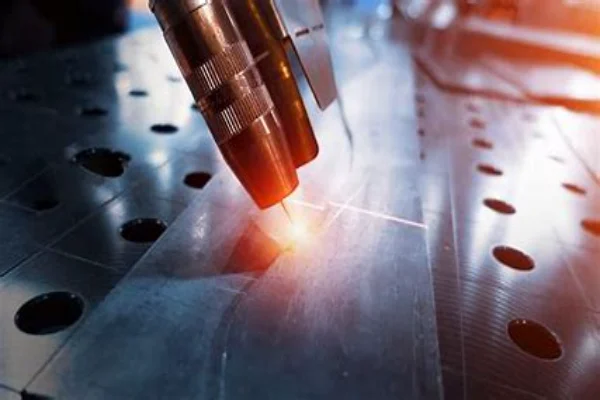
4. The Road Ahead: Future Prospects
As technology continues to evolve, the distinction between continuous and quasi-continuous lasers may blur, leading to hybrid models that combine the best of both worlds. Both lasers hold immense promise, and their applications are expected to expand even further, touching various spheres of our lives.

Conclusion
Both continuous and quasi-continuous lasers have carved a niche for themselves in the laser technology landscape. While continuous lasers are celebrated for their stability and efficiency, quasi-continuous lasers shine in applications demanding precision and control. As we move forward, it’s evident that both will continue to play a crucial role in shaping the future of laser technology.
Frequently Asked Questions (FAQs)
- What are the primary differences between continuous and quasi-continuous lasers?
- Continuous lasers emit a steady beam, while quasi-continuous lasers produce rapid pulses, appearing as a continuous beam due to their high repetition rate.
- Why is Nd:YAG commonly used in continuous lasers?
- Nd:YAG is renowned for its high thermal conductivity and ability to produce high-power outputs, making it suitable for various applications.
- In which domain is Ti:Sapphire primarily used?
- Ti:Sapphire, with its wide tuning range and short pulse durations, is predominantly used in applications demanding high precision, such as advanced research projects.
- Do quasi-continuous lasers produce less heat than continuous lasers?
- Yes, due to their pulsed nature, quasi-continuous lasers typically generate reduced heat compared to continuous lasers.
- Which laser type is more energy efficient?
- Continuous lasers are generally more energy-efficient due to their stable and uninterrupted beam output.



